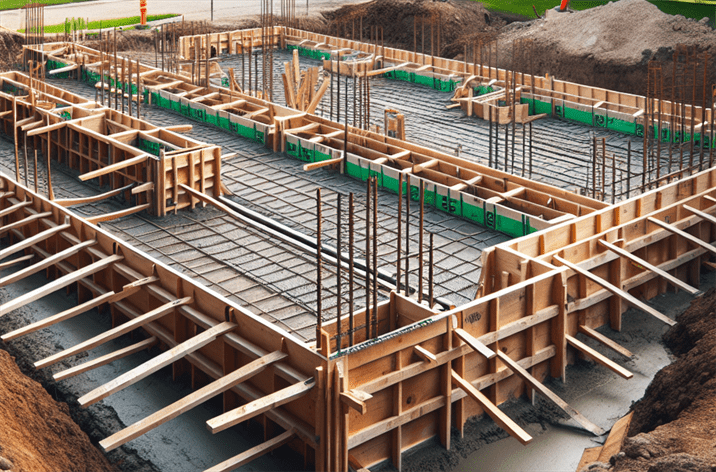Understanding Stakes and Lath: A Comprehensive Guide
Introduction
Have you ever wondered how construction projects maintain precision and clarity during planning and execution? One of the unsung heroes in this realm is stakes and lath. These simple yet effective tools are crucial for marking boundaries, guiding layouts, and ensuring accurate measurements on job sites. According to recent studies, the use of stakes and lath has surged in popularity, driven by the need for improved accuracy and efficiency in construction projects.
In this article, we will explore what stakes and lath are, their historical significance, and their applications across various industries. We will also delve into how they work, the benefits they offer, and the latest trends shaping their evolution. Whether you’re a seasoned professional or a DIY enthusiast, understanding stakes and lath will enhance your project execution and drive better results.
What is Stakes and Lath?
Definition
Stakes and lath are essential tools in construction, landscaping, and surveying. Stakes are typically wooden or metal posts that serve as markers, while lath refers to thin strips of wood or other materials used to support or outline structures. Together, they create a framework that visually represents project boundaries, layout designs, or temporary structures.
Historical Context
The use of stakes and lath dates back to ancient civilizations, where they were employed for various surveying and construction tasks. Over time, these tools have evolved in both design and material. Early stakes were often made from readily available wood, while modern options include treated wood and synthetic materials that offer enhanced durability. The evolution of technology has also led to more innovative methods of using stakes and lath, making them indispensable in contemporary construction practices.
Importance of Stakes and Lath
In today’s construction landscape, the importance of stakes and lath cannot be overstated. They are pivotal for ensuring proper alignment, facilitating communication among project teams, and minimizing errors. The increasing complexity of construction projects has made these tools even more relevant, particularly as teams strive for efficiency and precision.
Stakes and Lath in the Context of Construction
In the realm of construction, stakes and lath play a crucial role in setting up site boundaries and establishing accurate layouts. For instance, they are often used in grading and excavation projects to ensure that earth-moving equipment operates within specified limits. Understanding best practices for using stakes and lath in construction can significantly enhance workflow and project outcomes.
Best practices for using stakes and lath in construction ensure accurate project layouts and alignments.
Key Players or Contributors
Numerous companies and professionals have contributed to the advancement of stakes and lath technology. From manufacturers producing eco-friendly wooden stakes to innovators developing high-performance tools for construction alignment, the industry continues to grow. For example, Stans Stakes & Lath has emerged as a key player, providing a range of affordable stakes and lath tailored for various construction needs.

How Does Stakes and Lath Work?
The Mechanics of Stakes and Lath
Stakes and lath function through a straightforward yet effective mechanism. Here’s how they work:
- Site Preparation: Before any physical work begins, the site is cleared and prepared. This step includes identifying the boundaries and layout requirements.
- Placement of Stakes: Markers are driven into the ground at calculated intervals to outline the perimeter of the project. The positioning of these stakes is critical, as they serve as reference points throughout the construction process.
- Attaching Lath: Wooden lath strips or other materials are then attached to the stakes to form a visible framework. This framework assists in visualizing the project layout and can be adjusted as necessary.
- Continuous Monitoring: As construction progresses, the stakes and lath are monitored and adjusted to ensure alignment with the project’s evolving requirements.
Technological Foundations of Stakes and Lath
The integration of technology in the use of stakes and lath has led to significant improvements in accuracy and efficiency. Advanced tools such as GPS and laser leveling systems are now employed alongside traditional stakes and lath. These technologies allow for precise positioning and measurement, reducing the likelihood of errors during construction.
Real-World Applications of Stakes and Lath
Stakes and lath are utilized in various real-world applications, including:
- Boundary Marking: They are essential for defining property lines and ensuring compliance with zoning regulations.
- Site Layout: In landscaping and construction, stakes and lath help establish layout designs before permanent structures are built.
- Surveying: Surveyors rely on stakes and lath to mark critical points in their assessments, ensuring precise measurements.
Boundary Stakes and Their Role in Defining Property Lines are an example of how stakes and lath contribute to clear property boundaries.
Case Studies/Examples of Stakes and Lath in Action
- Residential Construction: A contractor utilized wooden stakes and lath to outline the footprint of a new home. This ensured that all workers were aligned with the design, resulting in a smoother build process.
- Landscaping Projects: A landscape designer marked out garden beds using lath, allowing for clear visibility of the finished product before any planting took place.
Benefits and Drawbacks of Stakes and Lath
Benefits
While stakes and lath offer numerous advantages, they also have limitations.
- Cost-Effective: They are relatively inexpensive tools that can save time and money on projects.
- Versatile: Suitable for various applications, from construction to landscaping.
- Easy to Use: Require minimal training for effective implementation.
Benefits of Using Stakes and Lath in Construction explain further how these tools contribute to project success.
Drawbacks
- Weather Sensitivity: Wooden stakes can warp or degrade in adverse weather conditions.
- Physical Limitations: They require manual placement and adjustment, which can be labor-intensive.
The Benefits of Stakes and Lath
Why Use Stakes and Lath?
Using stakes and lath in construction and landscaping offers numerous practical benefits:
- Increased Accuracy: They help ensure that measurements and layouts are precise, reducing errors in subsequent construction phases.
- Enhanced Communication: Clear visual markers improve communication among team members, aligning everyone on project specifications.
- Improved Efficiency and Productivity: When utilized effectively, stakes and lath can significantly streamline construction processes. By providing a clear framework, they enable teams to work more efficiently, reducing the time spent on adjustments and rework. In high-pressure environments, this can lead to faster project completions and enhanced productivity.
Cost-Effectiveness
One of the most compelling reasons to use stakes and lath is the potential for cost savings. By minimizing errors and improving workflow, construction teams can avoid costly mistakes that arise from misalignments and measurement errors. For organizations looking to reduce costs without sacrificing quality, affordable stakes and lath for construction needs offer a viable solution.
Enhanced User Experience with Stakes and Lath
Stakes and lath also contribute to an enhanced user experience in construction projects. Clear boundaries and layouts improve safety on job sites, allowing workers and equipment to navigate with confidence. Additionally, stakeholders can visualize the project more effectively, leading to higher satisfaction rates.
Long-Term Benefits of Stakes and Lath
The long-term benefits of using stakes and lath extend beyond immediate project outcomes. Investing in high-quality, durable stakes and lath can lead to improved project reputations, as clients notice the attention to detail and precision in execution. Moreover, as construction trends evolve, the adoption of sustainable and eco-friendly materials in stakes and lath can align with broader industry goals for responsible building practices.
Conclusion
In conclusion, stakes and lath are indispensable tools in the construction and landscaping industries. Their ability to enhance accuracy, communication, and efficiency makes them vital for successful project execution. As the landscape of construction continues to evolve, embracing innovative methods and materials related to stakes and lath will be essential for staying competitive.
For those looking to learn more, consider exploring the essential role of surveying stakes in construction projects or discovering best practices for placing site grading stakes on uneven terrain. By understanding and utilizing stakes and lath effectively, you can elevate your projects to new heights, ensuring that they are completed on time, within budget, and with the utmost precision.
Resource Links:
1. Home Depot – Overview of stakes and lath products available for construction and gardening.
2. Lowe’s – Selection of lath and stakes for supporting plants and marking boundaries.
3. Fleet Farm – Information and pricing on lath and stakes for various applications in landscaping and construction.

